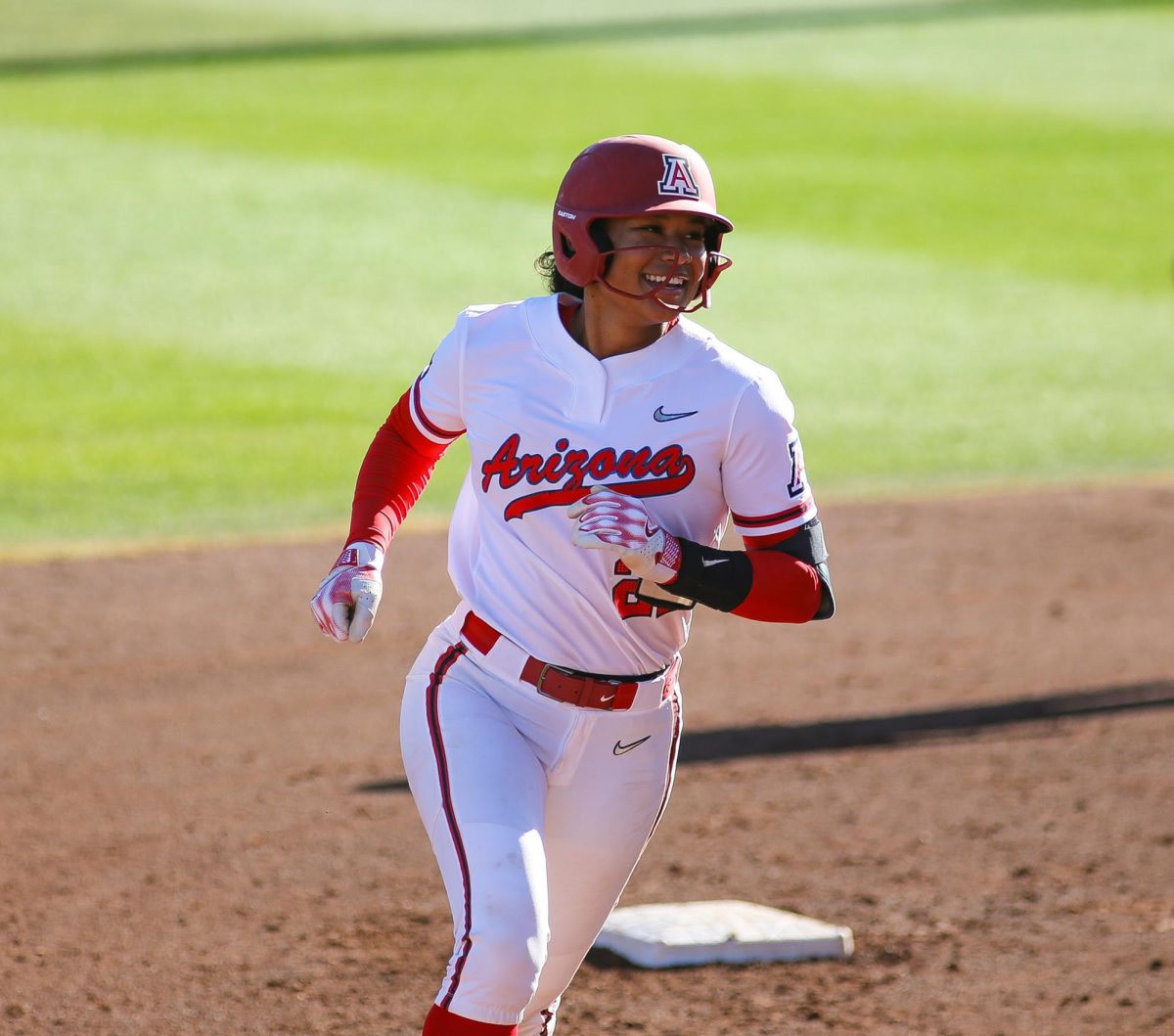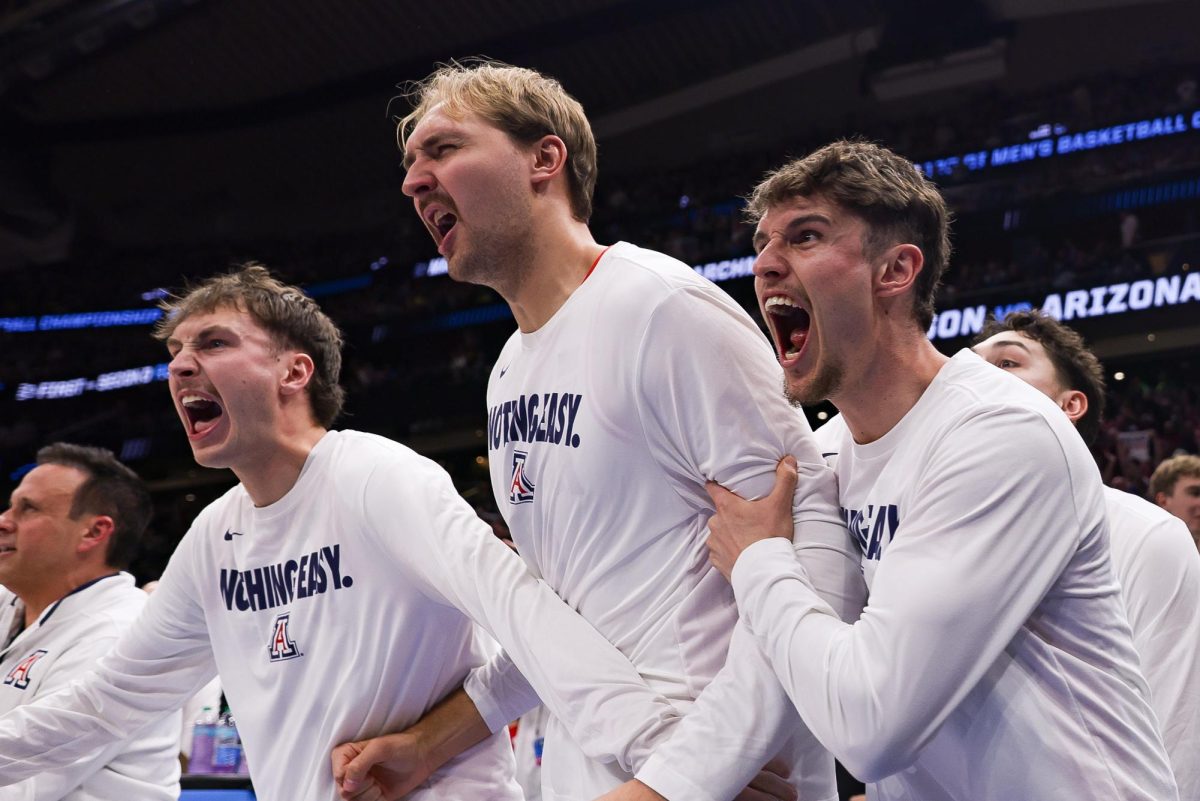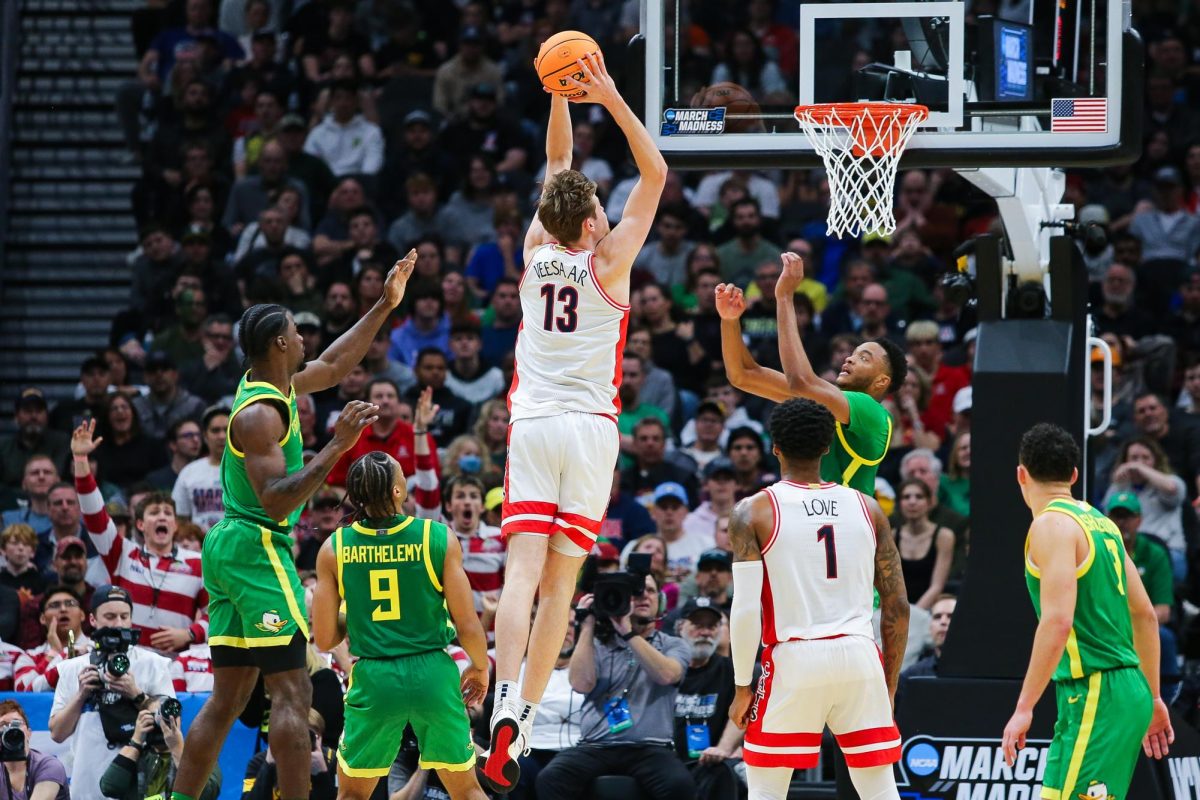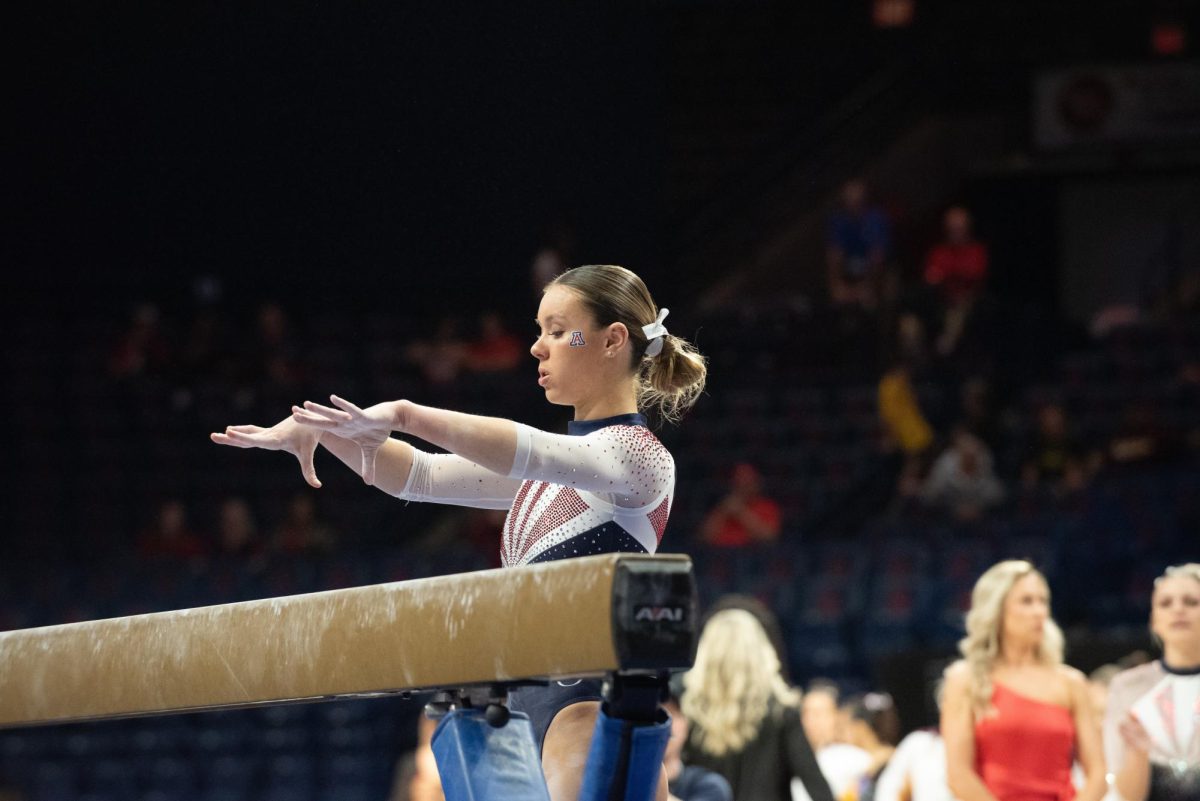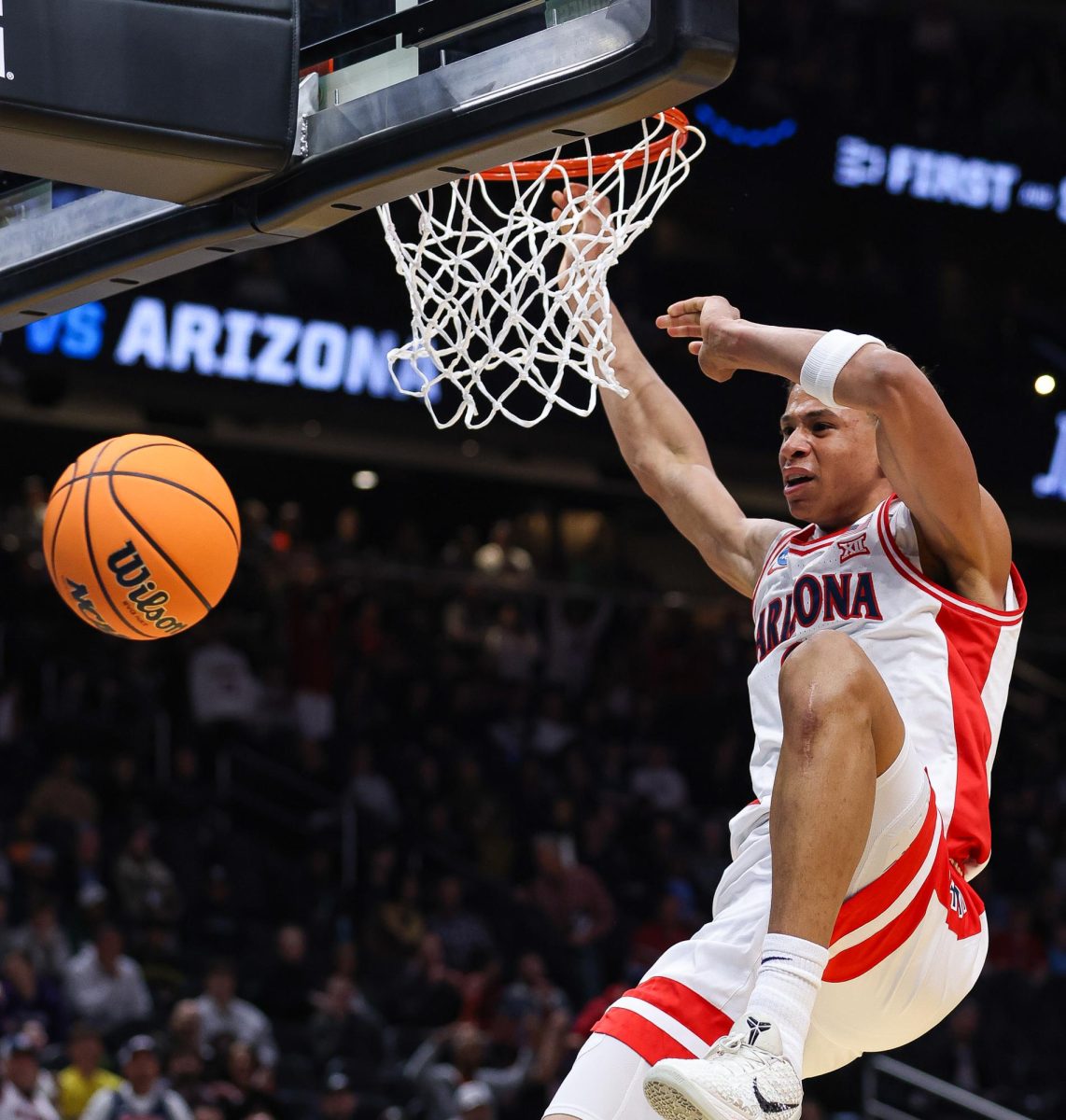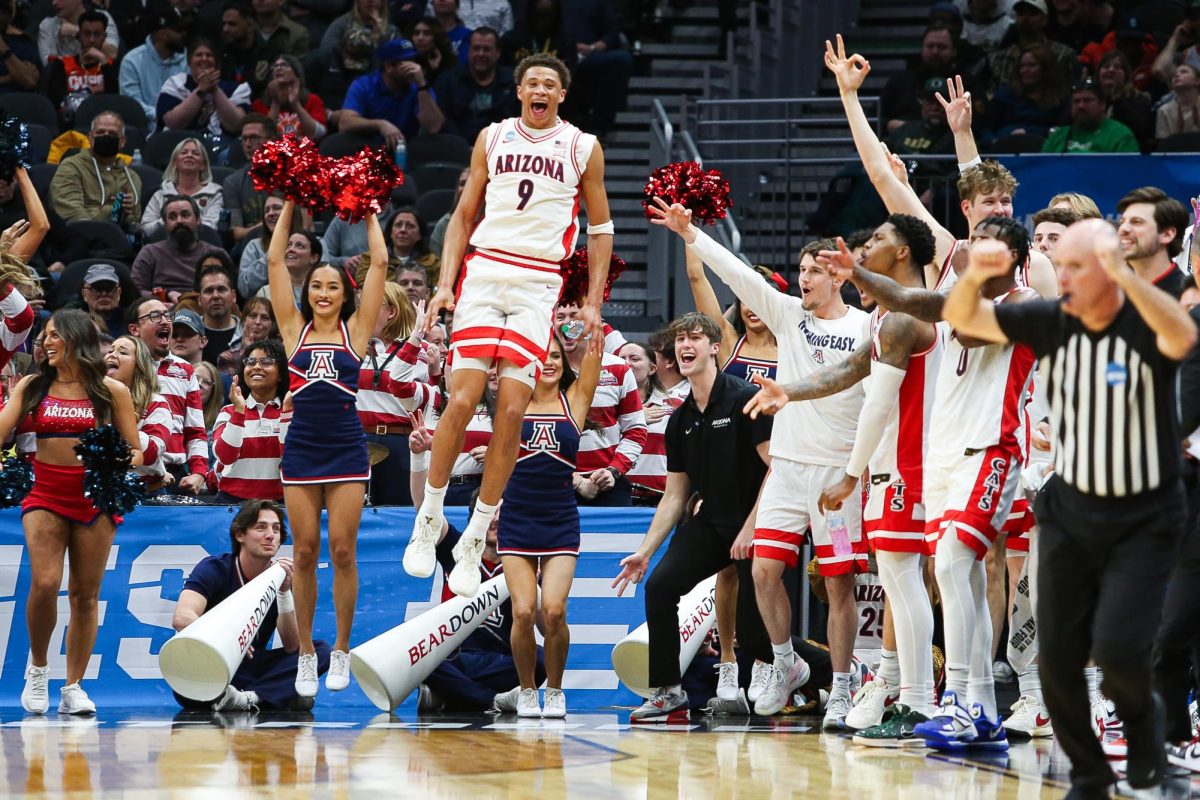Arizona gymnastics assistant John Court wanted to follow a social norm when he wished a prospective recruit “”Happy Birthday”” on Facebook.
Little did he know the simple gesture would open a Pandora’s box of intricate NCAA bylaw interpretations.
Court approached UA’s compliance coordinator of eligibility Gretchen Bouton for clarification.
“”I said ‘No, you can’t write that on her wall.’ You can send them a private message, as an e-mail, but you can’t write anything on the wall because it’s public,”” Bouton said she told Court.
The complexity of these daily interactions exemplifies the way bylaw-conscious coaches cover themselves with every click and keystroke when interacting with unsigned recruits.
Last spring, Bouton pioneered an innovative social media code of conduct to protect UA athletes from damaging photos and information. By mandating that student-athletes utilize privacy settings on websites like Facebook and MySpace, the UA became a pioneer in proactive social media regulations.
But that was a year ago. Today, MySpace is out and Twitter is in.
Dozens of UA athletes tweet today, unmonitored in a widespread cyber-culture too new for NCAA rules to regulate.
“”Last year at this time, Facebook and Twitter and those kinds of things were some of the folks that were on the cutting edge,”” said UA compliance director Bill Morgan. “”Now everyone is doing it. Next year there will be something else.
“”It’s just very difficult for a bureaucracy to keep up with that kind of stuff,”” he added. “”The reality or how it should be used or how the rules should be adapted to make this sort of thing work appropriately is difficult.””
The members of the UA men’s basketball team have a combined total of almost 10,000 followers on Twitter alone. On Facebook, the team has tens of thousands of friends.
This kind of reach can be a powerful tool in the recruiting world.
Earlier this offseason, UA freshman point guard Momo Jones expressed his eagerness for high-profile recruits Ray McCallum and Josh Selby to sign with Arizona.
Although neither recruit ended up at UA, Jones conveying his good intentions through a Facebook status update tiptoed a gray area in NCAA bylaws: “”Just spoke to the Lil Homie Ray McCallum. Told him it would be great to have him in the backcourt with me next year. Pac 10 would definitely be riding the wave of this new AZ Legacy. Josh Selby you already know Lil Bro come join ya boy. Jones, Ray, Josh Selby in the backcourt,”” Jones said on his Facebook. “”RAY AND SELBY AND ZONAZOO WHAT YALL THINK BOUT THAT?””
Interpreting the NCAA bylaws involves a combination of existing rules. There’s no “”social media”” statute specifically prohibiting certain messages on Facebook or Twitter. However, the NCAA could interpret such behavior as a violation of rules prohibiting the publicization of a recruiting trip through media.
“”I don’t think our student-athletes, rule-wise, they can’t announce anything the way we can’t,”” Morgan said, “”… that’s one of those areas where a new technology and the old rules really butt heads. I’m reasonably certain that there is an interpretation out there about student athletes not doing that sort of thing.””
UA wing Kevin Parrom also voiced a similar recruiting plea on Twitter: “”Zona zoo, wassup? I love ya’ll to death. Zona zoo we need to get … jack, josh selby or get the upgraded version of kevin parrom.””
The NCAA has always been slow adopting new bylaws to technological advances. In 2007, text message was banned from coach-to-recruit interactions.
“”The NCAA can’t keep up fast enough,”” Bouton said.
UA’s student-athlete social media guidelines were mainly designed to protect athletes from controversial material and photos. Bouton said UA and Stanford lead the Pacific 10 Conference in such policies, as both were asked to speak at a conference last summer.
There’s also a fine line between shielding athletes from Internet gossip and the nonstop media-frenzy and violating freedom of speech.
“”You get into free speech, and we’re telling them set the privacy settings. We don’t care what you say to your friends but just don’t have it to go across the world in for your own benefit,”” Morgan said. “”The reason we’re doing it is to try and basically protect them from themselves, which sounds Big Brother-ish, but a lot of them don’t understand the kinds of things that can happen.””
The UA doesn’t specifically designate someone to monitor athletes’ social media usage, leaving that responsibility up to the coaches themselves. But those around the Pac-10 landscape keep a close eye on their competition — like coaches keeping tabs other coaches’ friendships with recruits.
Arizona basketball coach Sean Miller told the Daily Wildcat last spring that he doesn’t use Twitter.
“”He thinks Twitter can be trouble,”” UA point guard Nic Wise said of his coach’s social media absence.



